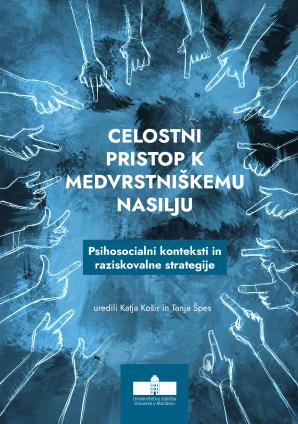Značilnosti razredov, kjer je medvrstniškega nasilja več
Synopsis
In this chapter, we argue for the importance of examining class-level characteristics for understanding peer violence. We summarize the findings of previous research that examined demographic and psychosocial characteristics of classes: class size, student age, class hierarchies, class norms, moral disengagement, and teacher-student relationships. This research shows that strong class hierarchies and norms that link popularity to aggression increase the risk of violence. There is also more violence in classes with more moral disengagement, poorer relationships with teachers, and higher popularity goals. In the final part of the chapter, we present the preliminary results of our research: the associations between modes of participation in peer violence and class characteristics at the class level; classes are therefore the basic unit. Our preliminary data confirm the findings of previous research that examined the factors of different modes of participation in peer violence at the level of psychosocial characteristics of classes.







